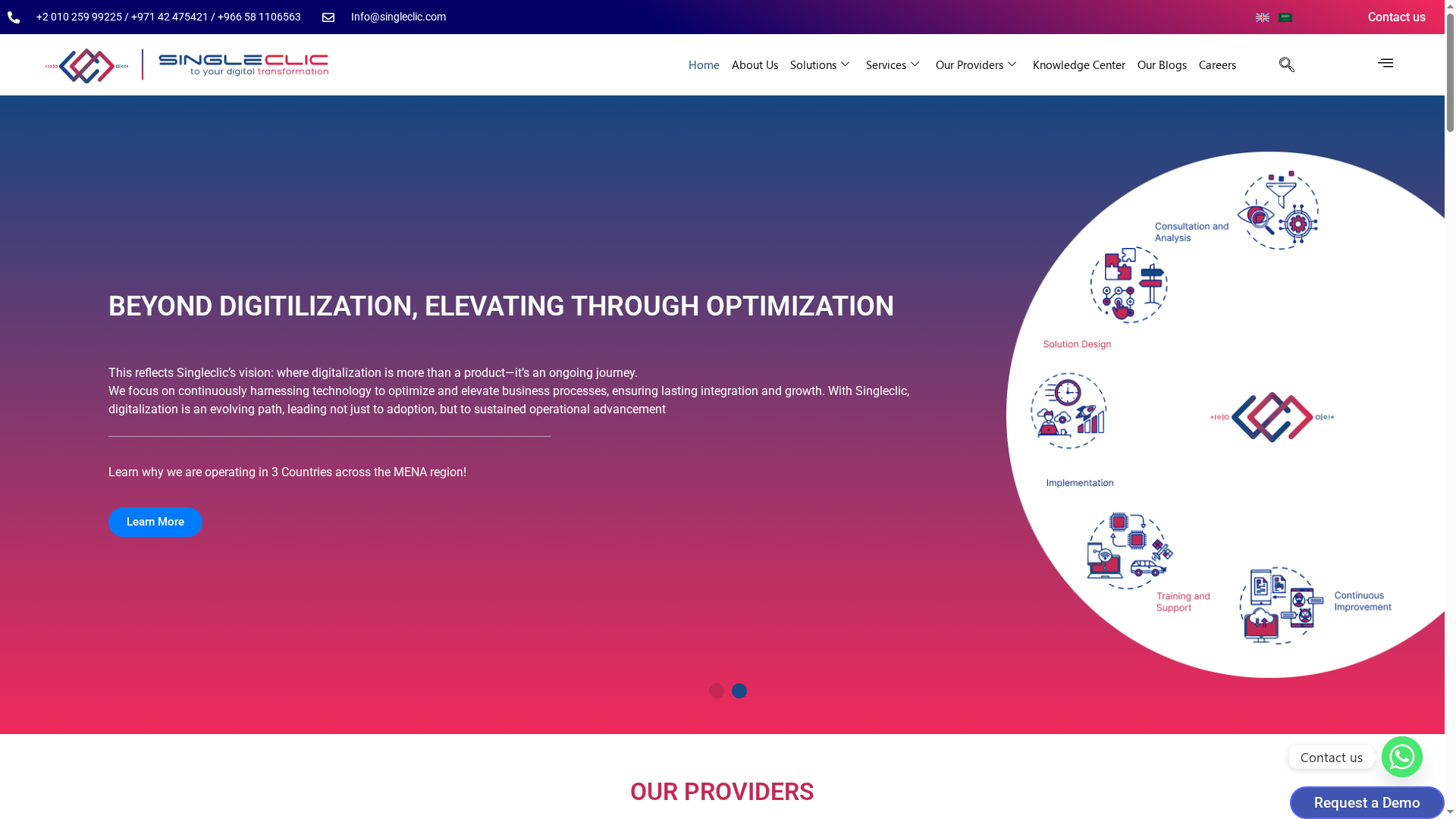Over 65 percent of american businesses are now exploring low-code platforms to speed up digital innovation and reduce costs. The growing demand for rapid development solutions shows how critical these tools have become in today’s fast-paced market. Understanding what sets low-code platforms and automation apart can help companies make better choices, keep up with change, and unlock new opportunities for growth and efficiency.
Table of Contents
- Defining Low-Code Platforms And Automation
- Key Features And Capabilities Explained
- Types Of Low-Code Solutions For Business
- Real-World Use Cases In The MENA Region
- Risks, Limitations, And Best Practices
- Comparing Cortex With Global Alternatives
Key Takeaways
| Point | Details |
|---|---|
| Low-Code Platforms Enable Rapid Development | Organizations can significantly accelerate application development and digital transformation through low-code platforms, which minimize traditional coding requirements. |
| Diverse Low-Code Solutions Available | Various low-code solutions, including enterprise application platforms and workflow automation tools, cater to different business needs and technical capabilities. |
| Risks Require Strategic Management | Organizations should implement robust security measures and governance protocols to mitigate potential risks associated with low-code platforms, especially regarding sensitive data handling. |
| Cortex Provides Localized Solutions | Cortex stands out in the MENA region by offering tailored low-code solutions that support local languages and market needs, differentiating itself from global competitors. |
Defining Low-Code Platforms and Automation
Low-code development platforms represent a transformative approach to software creation that democratizes application development across organizations. According to jetir.org, these innovative platforms enable users to build applications with minimal traditional programming effort by leveraging visual development interfaces, drag-and-drop components, and pre-built templates.
At their core, low-code platforms abstract complex coding processes, making software development accessible to both professional developers and business users. Wikipedia defines these environments as graphical user interfaces that require little to no manual code writing, capable of producing fully operational applications or providing frameworks that might require minimal additional customization.
Key characteristics of low-code platforms include:
- Visual development interfaces
- Drag-and-drop component design
- Pre-built template libraries
- Minimal traditional coding requirements
- Rapid application development capabilities
- Enhanced business agility
The strategic value of low-code platforms lies in their ability to accelerate digital transformation. By reducing development time and lowering traditional software creation costs, these platforms empower organizations to respond more quickly to market changes and internal operational needs.
For businesses in Saudi Arabia and the UAE looking to optimize their digital strategies, low-code workflow automation represents a powerful tool for innovation and efficiency.
Key Features and Capabilities Explained
Low-code platforms offer a robust suite of features designed to revolutionize application development across enterprises. According to manageengine.com, these platforms provide a comprehensive toolkit that includes pre-built templates, seamless integration capabilities, workflow automation, cross-platform deployment, and remarkable scalability.
Runsystem.id highlights additional critical capabilities that make low-code platforms powerful enterprise solutions. These include built-in integrations with third-party services, cloud-based deployment options, microservices support, sophisticated collaboration tools, and advanced governance features like role-based access control and comprehensive audit trails.
Key capabilities of modern low-code platforms include:
- Drag-and-drop visual interface design
- Rapid application development
- Seamless enterprise system integrations
- Advanced workflow automation
- Cross-platform compatibility
- Scalable cloud deployment
- Role-based access management
- Real-time performance monitoring
For organizations in Saudi Arabia and the UAE seeking digital transformation, these platforms represent more than just a development tool. Low-code business process automation enables businesses to quickly adapt to market changes, reduce development cycles, and empower both technical and non-technical team members to contribute to digital innovation. By abstracting complex coding requirements, low-code platforms democratize application development and accelerate organizational agility.
Types of Low-Code Solutions for Business
Businesses today have multiple low-code development approaches to choose from, each designed to meet different organizational needs and technical capabilities. Wikipedia explains that low-code development platforms (LCDPs) provide software development environments with graphical user interfaces that require minimal traditional coding, enabling accelerated delivery of business applications.
Two primary types of low-code solutions dominate the market: low-code platforms and no-code platforms. According to Wikipedia, no-code development platforms (NCDPs) support software creation through graphical interfaces and configuration, completely eliminating the need for programming code and often offering prebuilt templates for rapid development.
Key types of low-code solutions include:
- Enterprise application development platforms
- Workflow automation solutions
- Mobile app development tools
- Customer experience management systems
- Business process management platforms
- Rapid prototyping environments
- Integration and API development tools
- Artificial intelligence and machine learning accelerators
For organizations in Saudi Arabia and the UAE seeking digital transformation, understanding these solutions is crucial. Low-code application development platforms offer businesses the flexibility to choose solutions that align with their specific technological maturity, skill sets, and strategic objectives. By selecting the right low-code approach, companies can dramatically reduce development time, lower costs, and empower teams to innovate more effectively.
Real-World Use Cases in the MENA Region
Low-code platforms are transforming digital innovation across the Middle East and North Africa, providing organizations with powerful tools to accelerate their technological capabilities. Kreante.co highlights a compelling example of a MENA-based company, Laboratoria, which successfully utilized low-code platforms to dramatically reduce application development time, minimize costs, and enhance overall business agility.
Superblocks.com reveals that organizations in the region are leveraging these platforms to empower developers, standardize design processes, and dramatically improve cross-team collaboration. This strategic approach enables businesses to create more efficient development workflows and accelerate their time-to-market for critical technological solutions.
Key use cases in the MENA region include:
- Enterprise resource planning (ERP) system customization
- Customer relationship management (CRM) application development
- Supply chain and logistics workflow automation
- Financial services process optimization
- Healthcare patient management systems
- Government service digitization projects
- Telecom service integration platforms
- Real estate portfolio management solutions
For businesses in Saudi Arabia and the UAE seeking digital transformation, understanding these practical applications is crucial.
 Odoo CRM Implementation represents just one example of how low-code platforms can revolutionize organizational capabilities, enabling companies to rapidly adapt, innovate, and compete in an increasingly digital marketplace.
Odoo CRM Implementation represents just one example of how low-code platforms can revolutionize organizational capabilities, enabling companies to rapidly adapt, innovate, and compete in an increasingly digital marketplace.
Risks, Limitations, and Best Practices
While low-code platforms offer tremendous potential, organizations must approach their implementation with strategic caution. Wikipedia highlights growing concerns about security and compliance, particularly for applications handling sensitive consumer data. The rapid development capabilities of these platforms can potentially create vulnerabilities if proper governance frameworks are not established.
Jetir.org reveals additional critical challenges facing low-code adoption, with IT professionals questioning the suitability of these platforms for large-scale, mission-critical enterprise applications. Some Chief Information Officers worry about potential increases in unsupported applications created through shadow IT practices, which can introduce significant organizational risks.
Key risks and mitigation strategies include:
- Implementing robust security governance protocols
- Establishing clear development and deployment guidelines
- Creating comprehensive user access management
- Conducting regular security and compliance audits
- Developing standardized template libraries
- Training teams on platform best practices
- Maintaining centralized application monitoring
- Defining clear approval workflows
For businesses in Saudi Arabia and the UAE seeking to leverage low-code technologies responsibly, Low-Code vs No-Code: Understanding Simplicity provides critical insights into navigating these complex technological landscapes. By understanding potential limitations and implementing strategic safeguards, organizations can harness the transformative power of low-code platforms while maintaining rigorous operational standards.
Comparing Cortex With Global Alternatives
In the competitive landscape of low-code development platforms, Cortex distinguishes itself by offering region-specific solutions tailored for the Middle East. Wikipedia provides context about software development platforms that combine no-code and low-code elements, highlighting the importance of flexible, platform-independent application development—a principle that Cortex embodies for MENA enterprises.
Unlike global alternatives such as Microsoft Power Fx, which offers spreadsheet-like programming logic, Cortex provides a uniquely localized approach. While global platforms like Power Apps or Kissflow offer generic solutions, Cortex is purpose-built for Arabic-speaking markets, supporting workflows in both English and Arabic with deep understanding of regional business nuances.
Key differentiators of Cortex include:
- Full Arabic UI/UX support
- Unlimited user licensing model
- On-premise deployment options
- Deep enterprise system integrations
- Real-time process optimization
- Runtime workflow modifications
- Predictable cost structures
- Localized customer support
For businesses in Saudi Arabia and the UAE seeking a truly tailored digital transformation solution, Low-Code Application Development Platforms represent more than just a technological choice—they’re a strategic decision that can redefine organizational capabilities. Cortex emerges as a powerful alternative that understands the unique challenges and opportunities of the MENA business ecosystem.
![]()
Unlock the Full Potential of Low-Code Platforms for Your Business
The Essential Guide to Low-Code Platforms highlights the challenges organizations face trying to accelerate application development while maintaining security and agility. If you struggle with lengthy development cycles or complexity in automating business processes, the need for a trusted, customizable solution is clear. Low-code platforms like Cortex offer powerful visual interfaces and workflow automation that empower both technical and non-technical teams. They enable your business to adapt quickly and optimize operations without sacrificing control or compliance.
Singleclic understands these pain points deeply. As a regional leader in Business Process Automation and Low-Code Application Development Platforms, we deliver Cortex — an Arabic-enabled, on-premise low-code platform built specifically for enterprises in the MENA region. Cortex supports unlimited users and real-time process optimization, offering your organization the agility to design, build, and evolve complex workflows seamlessly.
Take the next step to transform your business operations by partnering with Singleclic. Harness the power of true optimization beyond digitalization. Learn more about how our tailored low-code solutions can redefine your enterprise’s growth at Singleclic.

Ready to accelerate your digital transformation with a low-code platform designed for your region? Visit Singleclic today to explore how Cortex can help you automate, innovate, and scale faster than ever.
Frequently Asked Questions
What are low-code platforms?
Low-code platforms are software development environments that allow users to create applications with minimal manual coding by using visual development interfaces, drag-and-drop components, and pre-built templates.
What are the key features of low-code platforms?
The key features include visual development interfaces, drag-and-drop functionality, pre-built templates, rapid application development capabilities, seamless integration with other systems, and scalability.
How do low-code platforms enhance business agility?
Low-code platforms accelerate digital transformation by significantly reducing development time and costs, allowing organizations to quickly adapt to market changes and respond to internal operational needs.
What types of projects can benefit from low-code solutions?
Low-code solutions can benefit a wide range of projects, including enterprise resource planning (ERP), customer relationship management (CRM), workflow automation, mobile app development, and business process management.









